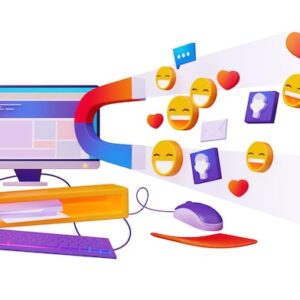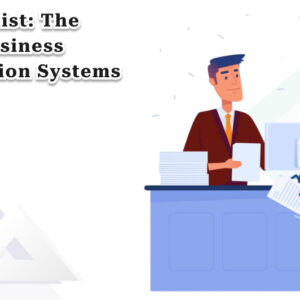Imagine this: you’re on the highway in a self-driving car, and suddenly a child runs across the road. The AI has to decide whether to swerve and risk the passenger’s life or continue forward and endanger the child. These “life-and-death” decisions are no longer just philosophical debates they are pressing ethical questions in today’s world of rapid artificial intelligence development services. From healthcare to autonomous weapons, AI systems are increasingly placed in situations where their choices directly impact human survival. But the big question remains: can we really trust AI with decisions of such gravity?
The Rise of AI in Critical Decision-Making
Artificial intelligence has evolved beyond chatbots and recommendation engines. It is now at the center of industries where lives hang in the balance:
- Healthcare: AI-powered diagnostic systems help detect diseases like cancer earlier than human doctors. But what if the algorithm misdiagnoses?
- Military & Defense: Autonomous drones and weapons are being tested to identify and neutralize threats, raising concerns about accountability.
- Self-Driving Cars: With Tesla, Waymo, and others advancing autonomous driving, AI must constantly make split-second safety judgments.
- Emergency Response: AI systems in disaster zones help allocate resources but a wrong decision could cost lives.
This shift from advisory roles to decision-making roles is why companies specializing as an AI agent development company
are gaining traction. They focus on building AI agents capable of making context-aware, ethical, and transparent decisions. But this growing dependency leads to new challenges in ethics, governance, and responsibility.
Why Trust Is Hard to Build in AI Systems
Trusting AI with life-and-death decisions requires us to address multiple layers of concern:
1. Transparency
AI is often criticized as a “black box,” meaning users don’t fully understand how it reaches a decision. In healthcare, for instance, if an AI recommends surgery, both the doctor and the patient deserve to know why. Without explainability, trust remains fragile.
2. Bias and Fairness
AI models learn from data. If that data is biased say, in racial profiling or medical histories then the AI’s decisions could perpetuate harmful patterns. Imagine an AI misdiagnosing a condition simply because its training data didn’t represent a certain demographic fairly.
3. Accountability
If an autonomous weapon harms civilians or a self-driving car causes an accident, who is responsible? The manufacturer? The programmer? The AI itself? This lack of clarity makes trust difficult to establish.
4. Ethical Dilemmas
Classic thought experiments like the “trolley problem” are now real-life issues. Should an AI prioritize saving more lives over fewer, or should it protect its direct passenger above all else? There’s no universally agreed-upon rulebook.
Because of these challenges, many organizations choose to hire AI developers who can build ethically aligned systems, integrate robust checks, and minimize risks. Skilled AI developers don’t just focus on technical performance; they also embed fairness, accountability, and explainability into the system’s architecture.
Real-World Examples: Where AI Already Makes Life-and-Death Decisions
AI systems are already playing critical roles:
- IBM Watson for Oncology: Assists doctors by recommending cancer treatment plans. While powerful, some hospitals have reported inconsistent or unsafe recommendations.
- Autonomous Military Systems: South Korea has deployed AI-powered sentry guns that can identify and shoot intruders, although human oversight is still required.
- Autonomous Vehicles: Companies like Tesla and Waymo continuously test AI-driven cars. There have already been accidents linked to AI decision-making, raising questions about safety.
- Disaster Relief: AI drones are used in earthquakes and floods to locate survivors. In such cases, prioritizing whom to rescue first could mean the difference between life and death.
The growing demand for AI integration services ensures these systems don’t operate in isolation but are seamlessly combined with human oversight, legal frameworks, and organizational values. Integration ensures AI decisions complement human judgment rather than completely replacing it.
Can AI Be Ethical? The Debate Continues
The Case For AI in Life-and-Death Decisions
- Speed and Efficiency: AI can process massive data faster than humans. In medical emergencies, every second counts.
- Reduction of Human Error: Fatigue, stress, and emotional biases affect humans but not AI.
- Scalability: AI can handle millions of simultaneous decisions, something impossible for humans alone.
The Case Against AI in Life-and-Death Decisions
- Lack of Empathy: AI doesn’t feel compassion or moral duty, both of which are vital in human life-and-death decisions.
- Over-reliance: Blind trust in AI could reduce human critical thinking and oversight.
- Unpredictable Failures: Even the best-trained AI can misinterpret unexpected scenarios, leading to catastrophic consequences.
Striking a Balance: AI + Human Oversight
Experts widely agree that AI should not fully control life-and-death scenarios at least not yet. Instead, a hybrid model works best, where AI provides decision support while humans retain the final authority. For instance:
- In healthcare, AI can analyze scans and suggest diagnoses, but doctors make the ultimate call.
- In autonomous driving, AI manages most operations, but drivers can intervene during critical failures.
- In military defense, AI can identify potential threats, but humans decide whether to engage.
This balance allows AI to enhance decision-making without replacing the human ethical compass. For organizations looking to adopt AI responsibly, AI consulting services play a crucial role in guiding strategy, governance, and ethical implementation. Consultants ensure that businesses don’t just adopt AI for efficiency but also consider transparency, accountability, and social responsibility.
The Road Ahead: Regulation, Standards, and Trust
For AI to be trusted with life-and-death decisions, the following steps are critical:
- Global Regulations: Governments and international bodies must create frameworks to govern AI in healthcare, defense, and transportation.
- Transparency Requirements: AI systems must be explainable, with clear reasoning provided for every major decision.
- Accountability Mechanisms: Responsibility must be defined across stakeholders developers, companies, and regulators.
- Bias Audits: Regular checks are needed to ensure training data doesn’t create discriminatory outcomes.
- Public Awareness: People must understand both the capabilities and limitations of AI to build realistic expectations.
Final Thoughts
AI is no longer a futuristic concept it is here, shaping our present and our survival. While the promise of AI in healthcare, defense, and transportation is undeniable, the ethical dilemmas are equally pressing. Can AI truly be trusted with life-and-death decisions? The answer is not a simple yes or no it depends on how responsibly we design, regulate, and integrate these systems.
One thing is clear: complete trust in AI without human oversight would be dangerous. But leveraging AI as a powerful partner while maintaining ethical, transparent, and accountable frameworks could save countless lives. Businesses, governments, and individuals all share the responsibility of ensuring that AI remains a tool for empowerment rather than unchecked authority.





